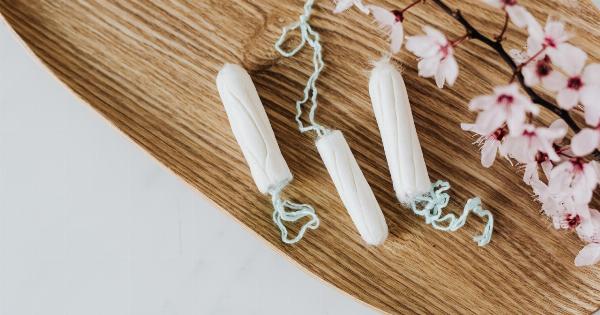Uterine fibroids, also known as leiomyomas, are noncancerous growths that develop in and around the uterus. These growths are relatively common, with studies suggesting that up to 70% of women may develop fibroids at some point in their lives.
While many women with fibroids experience no symptoms, others may face complications such as heavy menstrual bleeding, pelvic pain, and fertility issues.
Traditionally, the treatment for symptomatic fibroids has involved surgical procedures such as hysterectomy (removal of the uterus) or myomectomy (removal of the fibroids while preserving the uterus).
However, these surgeries come with risks, extensive recovery periods, and potential impacts on fertility.
Fortunately, advancements in medical technology have allowed for the development of minimally invasive fibroid treatment options, offering women less invasive alternatives.
One such innovative procedure is cold therapy, specifically cryoablation, which targets and destroys fibroids using extreme cold temperatures.
Understanding Cryoablation for Fibroids
Cryoablation, also known as cryotherapy or cold therapy, is a minimally invasive procedure that uses extreme cold temperatures to destroy targeted tissues.
In the case of fibroid treatment, cryoablation involves freezing and destroying the fibroids through the application of extreme cold.
The procedure is typically performed under local anesthesia or conscious sedation, allowing patients to remain awake and comfortable throughout.
Small incisions are made near the fibroids, and a thin probe called a cryoprobe is inserted into the uterine tissue. This cryoprobe emits extremely cold temperatures, freezing the fibroid and destroying its cells.
During the process, the cryoprobe may be moved to multiple locations to ensure comprehensive fibroid treatment. The freezing temperatures cause cellular destruction, interrupting the blood flow to the fibroid and resulting in its shrinkage over time.
The Benefits of Minimally Invasive Cold Therapy
Minimally invasive fibroid treatment using cold therapy offers several advantages over traditional surgical options:.
1. Preservation of the uterus
One of the most significant advantages of cold therapy is that it allows for the preservation of the uterus.
Unlike hysterectomy, which involves the complete removal of the uterus, cryoablation specifically targets the fibroids while leaving the rest of the uterus intact. This feature is especially crucial for women who wish to preserve their fertility or maintain hormonal balance.
2. Minimal scarring
Cryoablation involves small incisions that are typically less than a centimeter in size. Consequently, the procedure leads to minimal scarring compared to traditional surgical options.
The smaller incisions also reduce the risk of infection and promote faster healing. Patients can enjoy the cosmetic benefits of this minimally invasive treatment.
3. Reduced recovery time
Traditional surgical procedures for fibroid treatment often require extended hospital stays and prolonged recovery periods. In contrast, cold therapy allows for a faster recovery.
Most patients can resume their daily activities within a few days and experience minimal post-procedure discomfort.
4. Outpatient procedure
Cryoablation is typically performed as an outpatient procedure, meaning that patients can undergo the treatment and return home on the same day.
This eliminates the need for overnight hospital stays, making the procedure more convenient and less disruptive to the patient’s daily life.
5. Effective symptom relief
Minimally invasive cold therapy has been found to effectively relieve the symptoms associated with fibroids.
This includes reducing heavy menstrual bleeding, alleviating pelvic pain and pressure, and improving overall quality of life for women with fibroids.
Eligibility for Cold Therapy
Although minimally invasive fibroid treatment using cold therapy offers numerous benefits, it is not suitable for all patients.
The eligibility for cryoablation depends on several factors, including the size, number, and location of the fibroids, as well as the patient’s overall health and medical history.
Prior to the procedure, patients may undergo diagnostic tests, such as an ultrasound or MRI, to determine the size and location of the fibroids.
These tests help in assessing the feasibility of the treatment and ensuring that the fibroids can be effectively targeted using cryoablation.
Additionally, patients should discuss their medical history, current medications, and any underlying conditions with their healthcare provider to determine if they are suitable candidates for cold therapy.
Potential Risks and Complications
While cold therapy is generally considered safe and effective, like any medical procedure, it does carry some risks and potential complications. These may include:.
1. Discomfort or pain
Some patients may experience mild to moderate discomfort or pain during or after the cryoablation procedure. However, over-the-counter pain relievers are typically sufficient to manage any discomfort.
2. Infection
There is a slight risk of infection at the incision sites following cryoablation. However, proper wound care and following post-procedure instructions can significantly reduce this risk.
3. Bleeding
In rare cases, cryoablation may lead to excessive bleeding. This risk is minimized by carefully monitoring the procedure and applying appropriate techniques to control bleeding.
4. Damage to surrounding tissues
While cryoablation specifically targets fibroids, there is a small risk of damage to surrounding tissues. However, skilled and experienced healthcare professionals minimize this risk through accurate probe placement and monitoring during the procedure.
5. Incomplete fibroid destruction
In some cases, cryoablation may not completely destroy the fibroid or may require additional treatment sessions.
Regular follow-up appointments and imaging tests help ensure the success of the treatment and identify any remaining fibroid tissue that may require further intervention.
Conclusion
Minimally invasive fibroid treatment using cold therapy, specifically cryoablation, offers a promising alternative to traditional surgical procedures for women suffering from symptomatic fibroids.
With its minimal scarring, faster recovery time, and preservation of the uterus, cold therapy provides an effective solution for fibroid symptoms with reduced risks and complications.
If you are considering fibroid treatment, it is essential to consult with a qualified healthcare professional to determine the most suitable treatment option based on your specific condition and medical history.
With advancements in technology, you can now explore minimally invasive options like cold therapy and experience relief from fibroid symptoms without compromising your overall well-being.


























